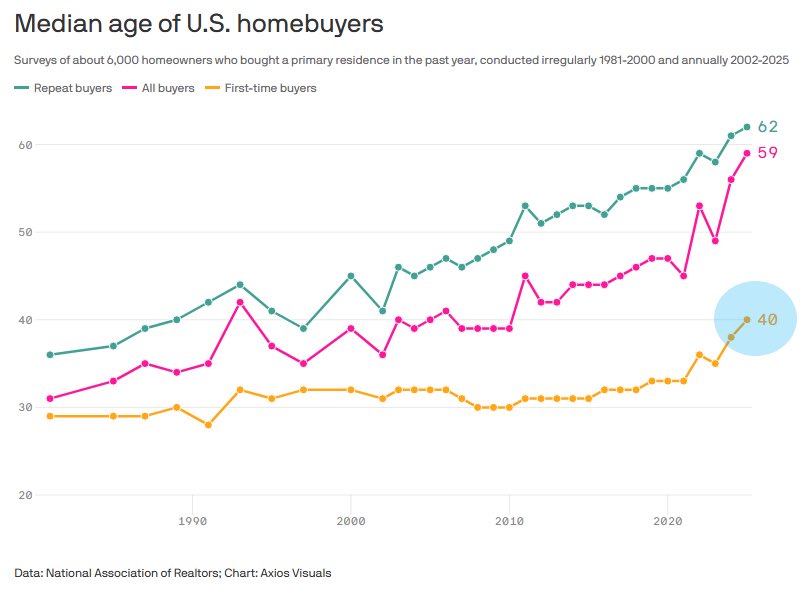After the Votes: Americans Keep Choosing Affordability

Whatever your read on last night’s results, one message keeps breaking through: Americans are still voting with affordability top of mind. Housing sits at the center of that concern. In poll after poll, majorities say homes in their area are unaffordable, and families want practical tools that lower monthly costs without trapping them in opaque debt.
This is beyond partisan positioning. It’s about the American Dream as a workable household budget. And it calls for what Adam Smith would recognize as original capitalism: align incentives, price risk fairly, let private capital compete to solve real problems, and let the public sector set the rules and bumpers.
From Subsidies to Co-Investment
Historically, we’ve leaned on cash-limited grants and rate buydowns. They help, but they’re small relative to today’s price-to-income math, and they don’t scale. A better path is to replace one-off subsidies with shared appreciation co-investment that lowers the first-mortgage payment now and recycles gains to help the next family later. In plain English: if a program (or investor) puts up, say, 20% of the purchase price, the homeowner repays 20% of the home’s appreciation at sale or refi, no interest, no monthly payment, no surprises. This is what Homium does, and its the model we hope many other lenders (including our competitors!) adopt, so that we can bring homeownership affordability to more middle class Americans.
Why this matters: monthly payment, not a tax credit, is what determines whether a family can actually buy in their market.

The SHARE Act: Shift the Burden, Crowd In Capital
A new bill is working its way through committee in the House that could really make a difference. The SHARE Act (Shared Homeowner Appreciation Residential Equity) as proposed by Rep. Blake Moore (Utah) would accelerate this shift by making returns from qualifying Shared Appreciation Mortgages (SAMs) tax-exempt when they meet strict consumer-friendly standards: no interest, no monthly payment, a true one-to-one sharing of appreciation, and income targeting to households 140% of AMI for owner-occupied homes. The point is to channel private dollars into fair, transparent down-payment co-investments at scale, moving the sunk-cost burden off general taxpayers and into aligned, pooled partnerships.
This is exactly the kind of policy that sets clear rules, protects families, and invites long-term institutional money to compete on price and service, without asking government to shoulder perpetual grant costs. When programs use this structure, families rush the door. California’s Dream for All shared-appreciation assistance sold in less than two weeks, with thousands placed on a waiting list. That’s not an anecdote; it’s household economics expressing itself in real time.
Catalytic Capital: Foundations and Family Offices as Spark Plugs
This is where legacy foundations, corporate foundations, and family offices can lead. With an average co-investment of ~$50,000 per home, a $10 million catalytic tranche can enable ~200 families to buy now and generate ~$40 million in homeowner equity over a decade, capital that can be recycled as loans repay. That’s a rare blend of financial discipline and compounding social return, tailor-made for mission investors.
Community wealth funds are a practical vehicle for this: donors and anchor sponsors set the mission; the fund provides shared-appreciation down-payment loans; repayments plus appreciation feed the next cohort. A $10 million pool can finance roughly 100 loans of $100,000 for households below 80% AMI in many markets, with transparent terms and no monthly payment burden.
Market Discipline, Family Control
The hallmark of well-designed SAMs is clarity and alignment: the homeowner keeps full control of the property; the program (or investor) shares upside in exact proportion to what it contributed; and the obligation clears at a liquidity event, not each month. This preserves dignity, no new payment to juggle, while letting capital participate in growth.
And because the model co-invests rather than over-leverages, it reduces default risk, protects neighborhoods, and supports intergenerational wealth transfer.
To scale responsibly, programs should be pooled and uniformly underwritten, with real-time transparency on assets and impact. Modern securitization rails and open-ledger records can make pools standardized, auditable, and low-friction to finance, exactly the features institutions require for long-term allocations. In practice, that means marking pools to market, automating tenders at NAV, and keeping an immutable trail of loan and impact data. Data science for good isn’t a slogan here; it’s the operating system for fair pricing and continuous accountability.
A Practical Blueprint for 2026
* States & HFAs: Update guidelines to recognize privately issued, consumer-safe SAMs alongside conforming first mortgages; run pilots or joint efforts with local sponsors.
* Congress & Treasury: Advance the SHARE Act’s tax treatment to crowd in pension, insurance, and other patient capital under fair-practice guardrails.
* Foundations & Family Offices: Seed community wealth funds or employer-anchored pools now; your catalytic dollars can flip markets from renting to owning within a single school year.
* Financial Services & Fintech: Design simple, 1:1 SAMs with clear disclosures, pool them for diversification, and instrument them with transparent data standards from day one.
The Mandate Beneath the Headlines
Affordability is the mandate voters keep issuing. The answer isn’t more rhetoric, it’s tools of dignity that lower monthly payments, respect homeowner autonomy, and scale through aligned private capital under public rules. We have the blueprint, the demand signal, and the capital. Now we need decision-makers and stewards of patient money to act.
If we do, we won’t just help families buy homes, we’ll restore a market-based ladder to the middle class and make the American Dream pencil out again, one co-investment at a time.

.png)


